More and more double rudder configurations become the new standard for sailboats. Having wide stern hulls conceived for reaching courses, many of them with hard chines in the aft makes it valid to introduce double rudders. At the latest four years ago when Hallberg-Rassy introduced the all-new HR 44 marking the start of the renewal of the brand, everybody must have acknowledge that we might be entering the era of double-ruddered boats.
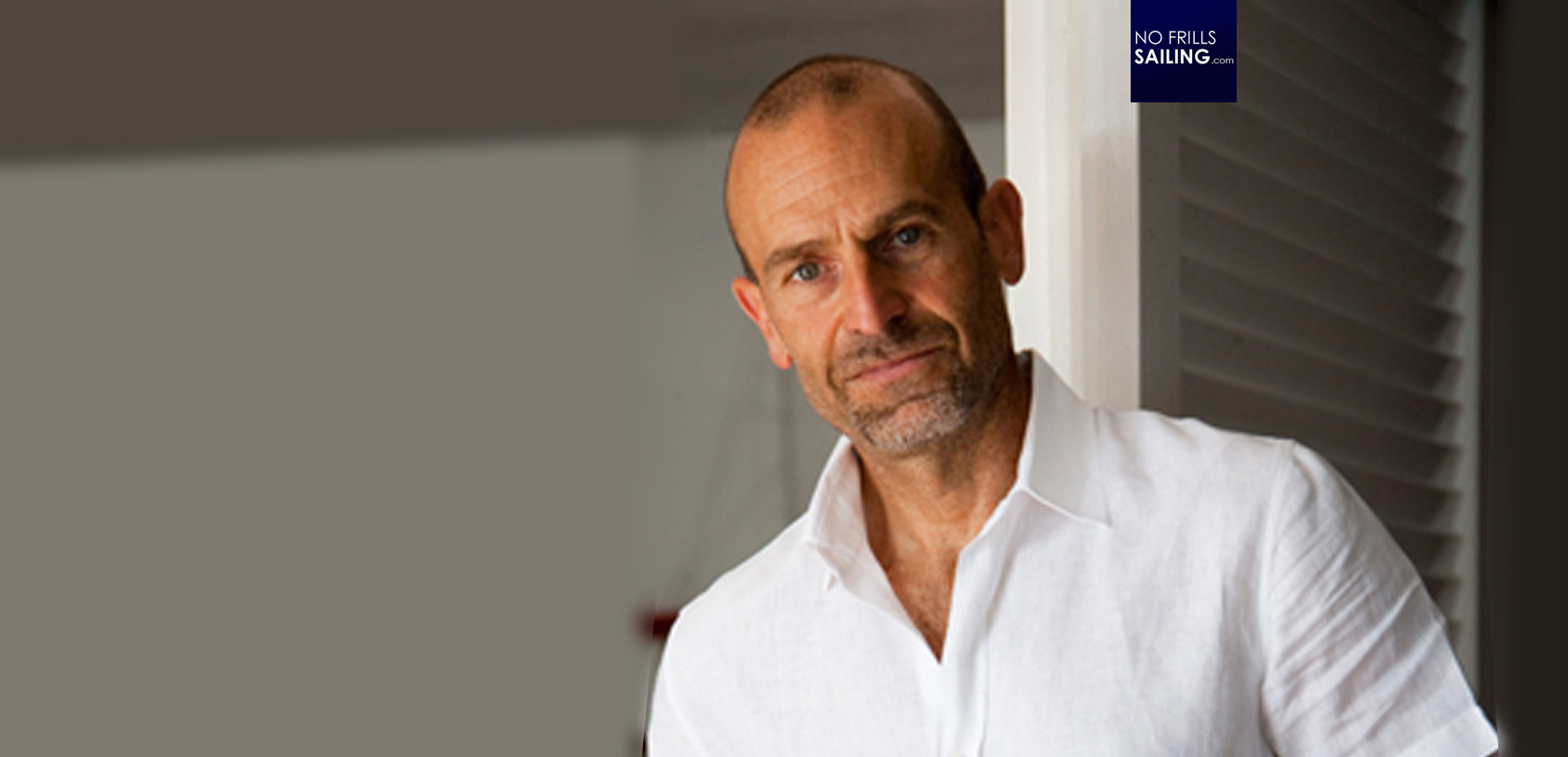
Really? There are still many single-rudder yachts out there. X-Yachts, although having introduced their first twin-rudder boat, is still sticking to the classic configuration for most of their yachts, so does Solaris and many, many others. Two weeks ago I talked to renowned yacht designer Umberto Felci on his latest work for Dufour – which is the Dufour 470 – noticing that this boat still bears the single rudder. I used the chance to ask him to share his opinion on twin vs. single rudders. Here is what he told me.
Yacht Designer Umberto Felci talks Single Rudder Configurations
Lars Reisberg | NO FRILLS SAILING.com: “Ciao Umberto. I´ve noticed that – relating to your latest work for Dufour Yachts –you seem to be sticking to a single rudder configuration. In times when almost all big brands have switched to double (even X-Yachts and Solaris now) that raises eyebrows: Why is that?
Umberto Felci: “Ciao Lars. Well, the Dufour 470, just like the rest of the fleet we have designed for this brand, simply does not need a twin rudder configuration to perform correctly. The shape of hher hull and the balance of the volumes makes the single blade the more efficient. It is also more effective for the boat. When it comes to twin-rudders, we only designed the 310 for Dufour with a twin rudder configuration because from the marketing point of view it was something interesting to evaluate.”

NO FRILLS SAILING.com: “Looking at, for example at an Oceanis 46.1, one can see that the twin-rudders are much shorter. Also, being slightly tilted to either side, the leeward rudder will be closely to upright in the water when the boat is sailing heeled: Aren´t these pro-arguments for twin rudders?”
Umberto Felci: “As you correctly say, typically the blade in a twin blade configuration is shorter, and this is one of the advantages of this solution, you are right here. In general, the angle and the position depends on the shape of the hull. Theoretically it will be in the centerline of the heeled canoe body in order to keep the efficiency even if the blade’s surface is smaller.”
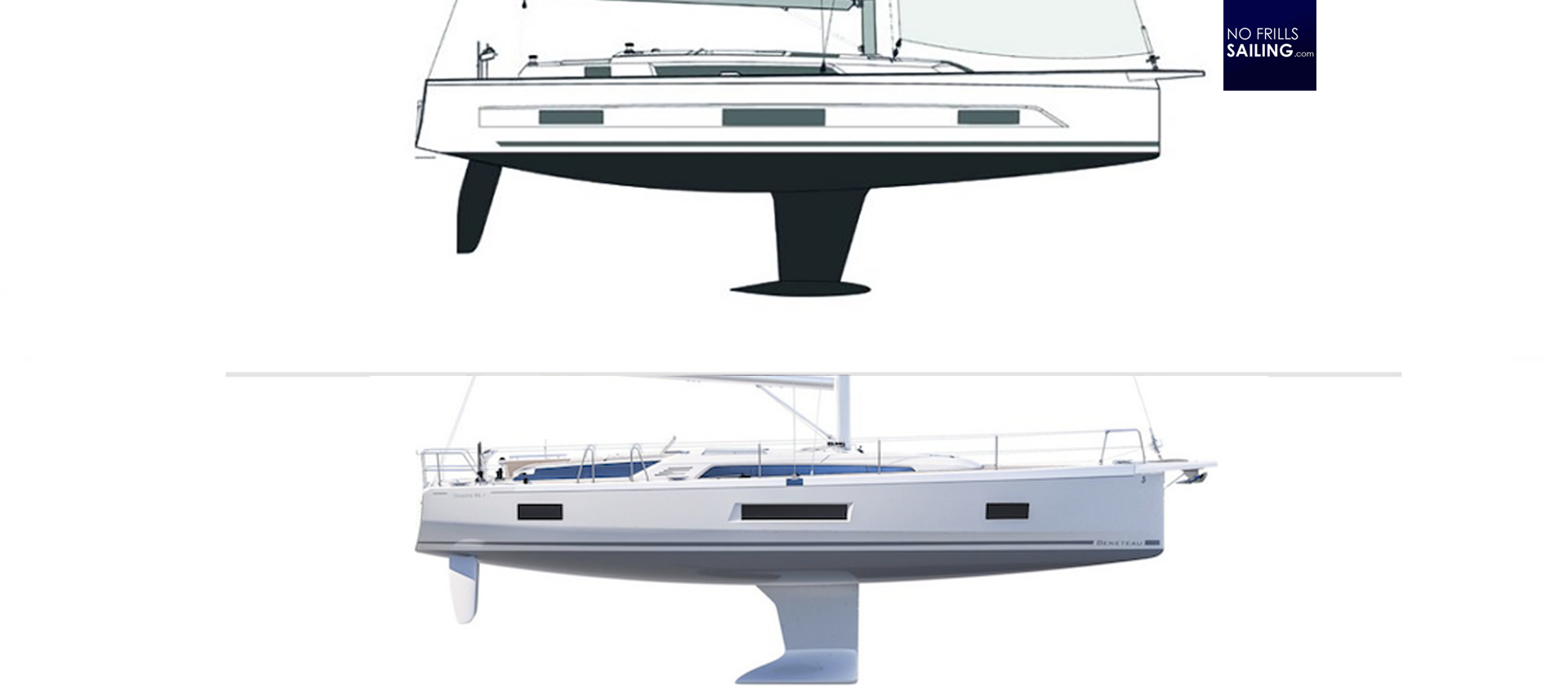
NO FRILLS SAILING.com: “When speaking to Mat Somer of M.A.T. boats about their new 13.40 he told me that this boat is available in twin and single rudder configuration. He said that single rudder is the choice for inshore, less sever wave-state and more moderate to light wind sailing. Is this also an assumption for Dufour that lead to single rudder configuration?”
Umberto Felci: “No, honestly for these kind of hulls and for the purpose of that kind of boats we consider the single blade the best configuration, the one with more plus than minus for both the client and the builder. But, like M.A.T. we have also made a similar choice possible for owners in some the semi-custom projects, like the Felci 61 yacht we designed some years ago for ICE Yachts. We have made 10 units of this Felci 61 and just three of them had twin rudders. This solution was mainly driven by the draft advantages. Connected to a lifting keel with a two meters-stroke it allowed a keel–up draft of less than 2 meters. This draft is simply not enough for a single blade to work correctly when heeled. Comparing the Felci 61 for one or twin rudders, well, the main difference is that you can appreciate a more intense feeling at the helm, which the single blade offers the helmsman thanks to the lift of the blade. This is something not fully present in a twin rudder configuration. And this is an advantage especially for those who appreciate inshore races, especially windward leeward courses. On the counter side, in a long reach with strong wind, you will appreciate the “four wheel drive sensation” offered by the twin blade, that can do a higher possible heel angle retarding the spin out of the blade.”
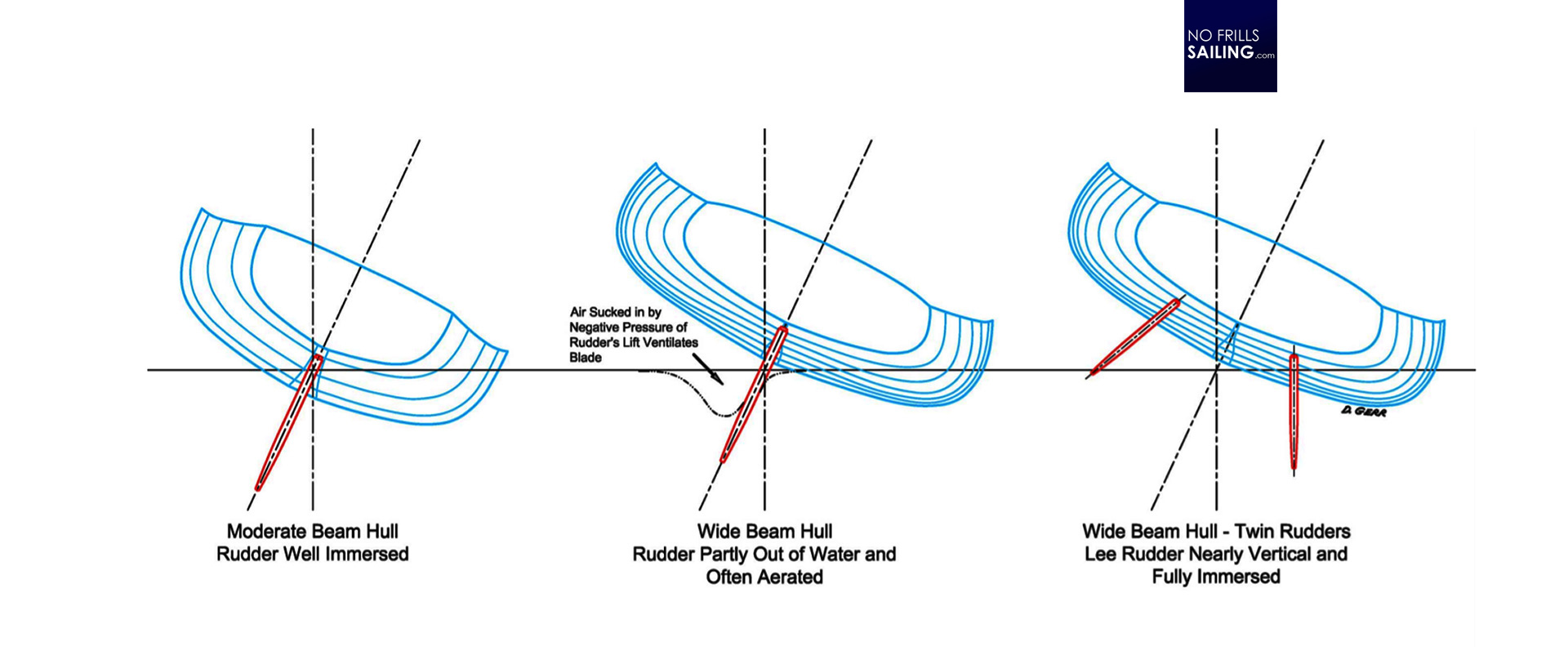
NO FRILLS SAILING.com: “One advantage I could imagine for a single rudder is also the mechanics – there is just two quadrants working all on one single shaft – instead of a mechanical transmission system on twin rudder-boats to work both rudders. Would you agree on this?”
Umberto Felci: “Yes, you are right. The twin rudders are more complicated and expensive. Also the tuning of their angle has some difficulties.”
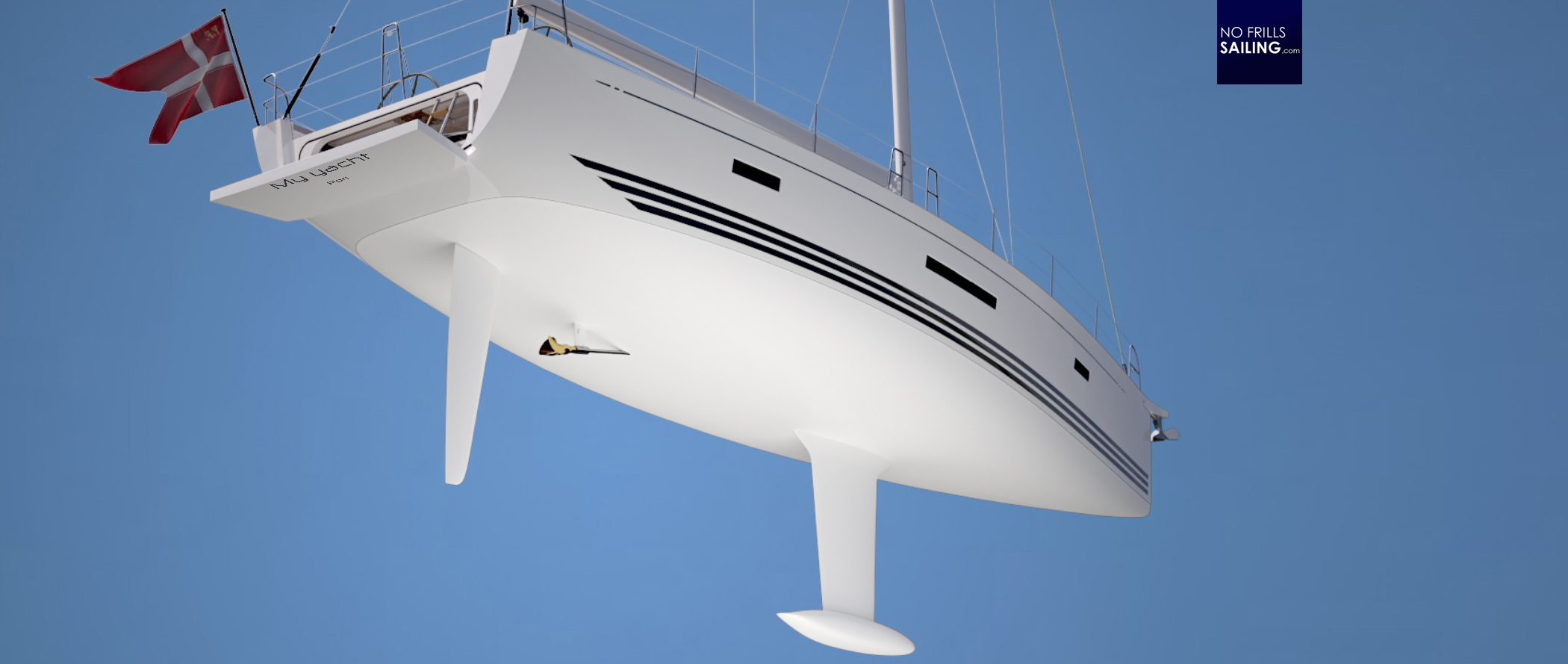
NO FRILLS SAILING.com: “Talking to the Humphreys brothers in their latest Oyster designs and asking for their reasons to switch from the skeg single rudder (which used to be a signature of Oysters) they answered that it was a logical reaction of a more widened hull, especially in the aft part of the boat. Wider hulls optimized for reaching points of sails simply need twin rudders, they said. Would you agree on this?”
Umberto Felci: “Absolutely, yes. The hull shape is clearly the element to consider when you have to make this choice. But it’s not the unique element to consider. It’s true that in some kind of large and flat hulls the twin rudder is absolutely the only choice you have but usually we do not adopt such extreme kind of hulls when we are designing a cruiser boat, even more if we are designing a production medium-displacement yachts that must be typically an “all purpose” sailing boat.”
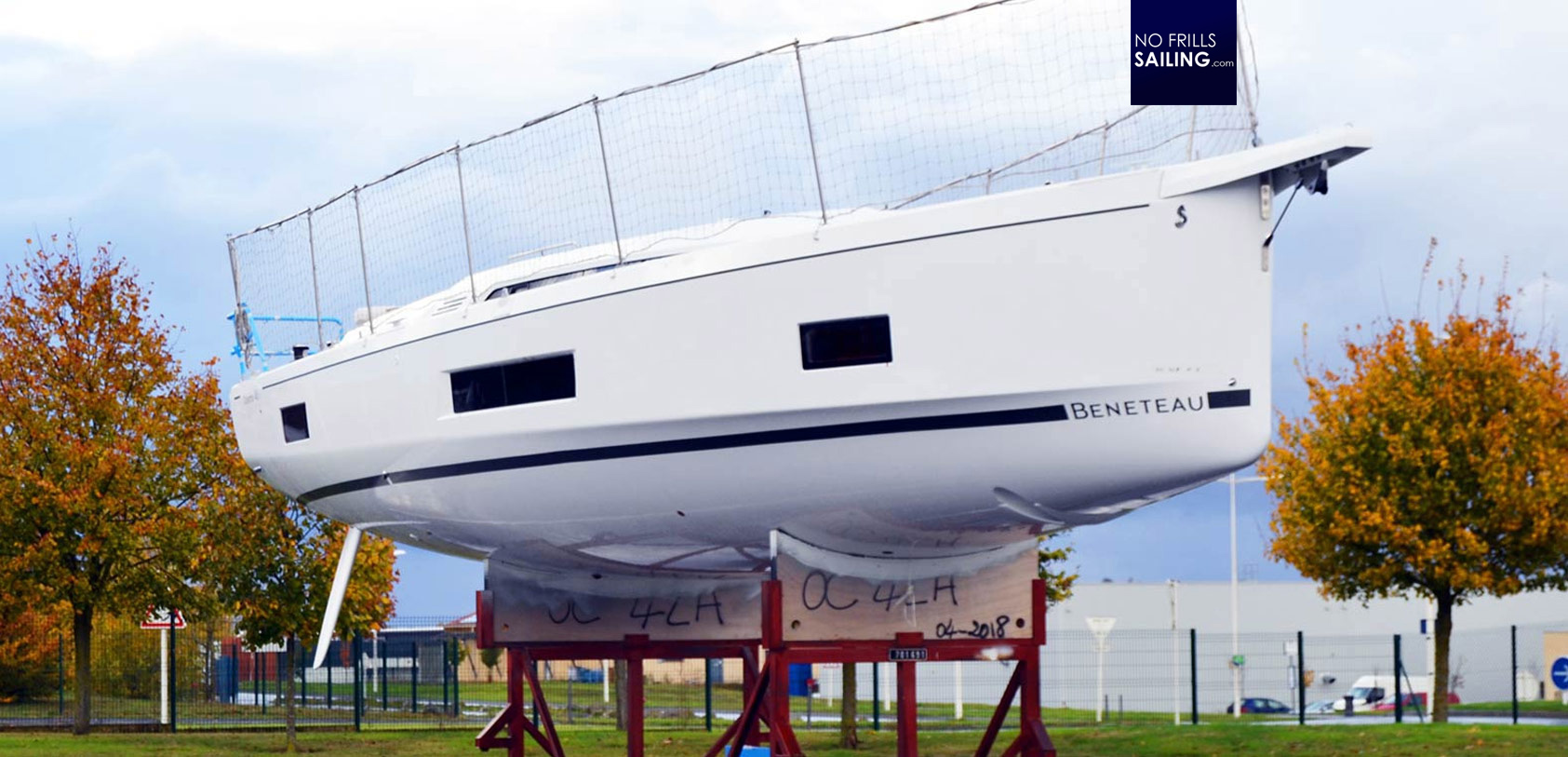
NO FRILLS SAILING.com: “So would you say that your hulls are more optimized for all points of sail and not mainly focused on broad and reaching courses?”
Umberto Felci: “This is correct if we talk about fast cruisers or racer cruisers. We always try to avoid extreme solutions, in any field of the projects. An all-round hull will not require mandatory a twin blade configuration. If you will finally opt for that solution it will depend also on some others factors, such as the draft, the space you need in the garage to locate the tender and also the possibility to do long downwind navigation with some extra control at the helm and so on. Possibly it became a very personal choice and as you see the elements that contribute to this choice are many and with feedbacks in many different areas of the project.”

NO FRILLS SAILING.com: “What will the future of Felci Designs bring? Is there a circumstance thinkable under which you would also agree to fit a double rudder configuration to a new boat? How would a design brief, let´s say for the next generation of Dufour boats, be like so that you would favor twin rudders?”
Umberto Felci: “As I told you, we like to consider all elements to arrive at the best solution for that special boat for that special client in that very moment. We have designed many boats adopting the twin rudder solution, starting with my project number one that was a Mini Transat, to arrive at the new ICE 60 we are designing in this moment. What I don’t consider correct is to choose one or the other solution a priori without making a deep analysis of the boundary conditions.”
Copyright pictures by Dufour Yachts, Germaine/Kerr Design (schematics), ICE Yachts & Felci Yacht design
Also interesting to read on yacht design:
Talking to Martin Menzner on inverted negative bows in yacht design
The revolutionary chines on the Oceanis 51.1
Talking to Javier Soto Acebal – mastermind of Solaris
